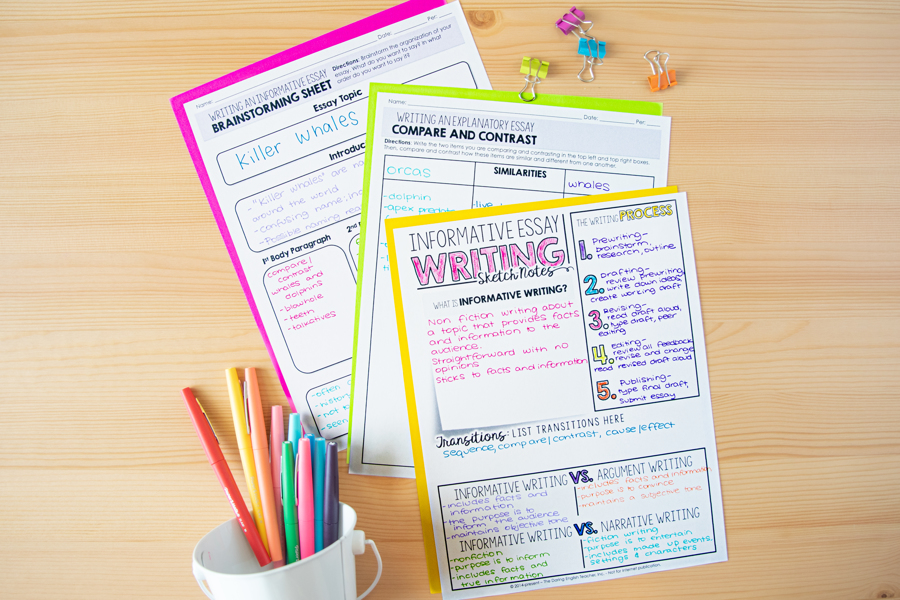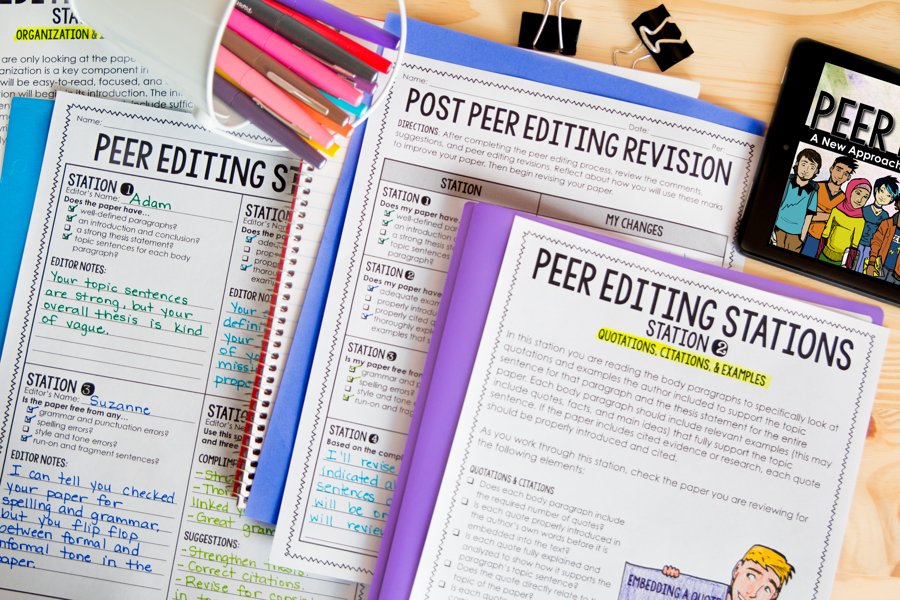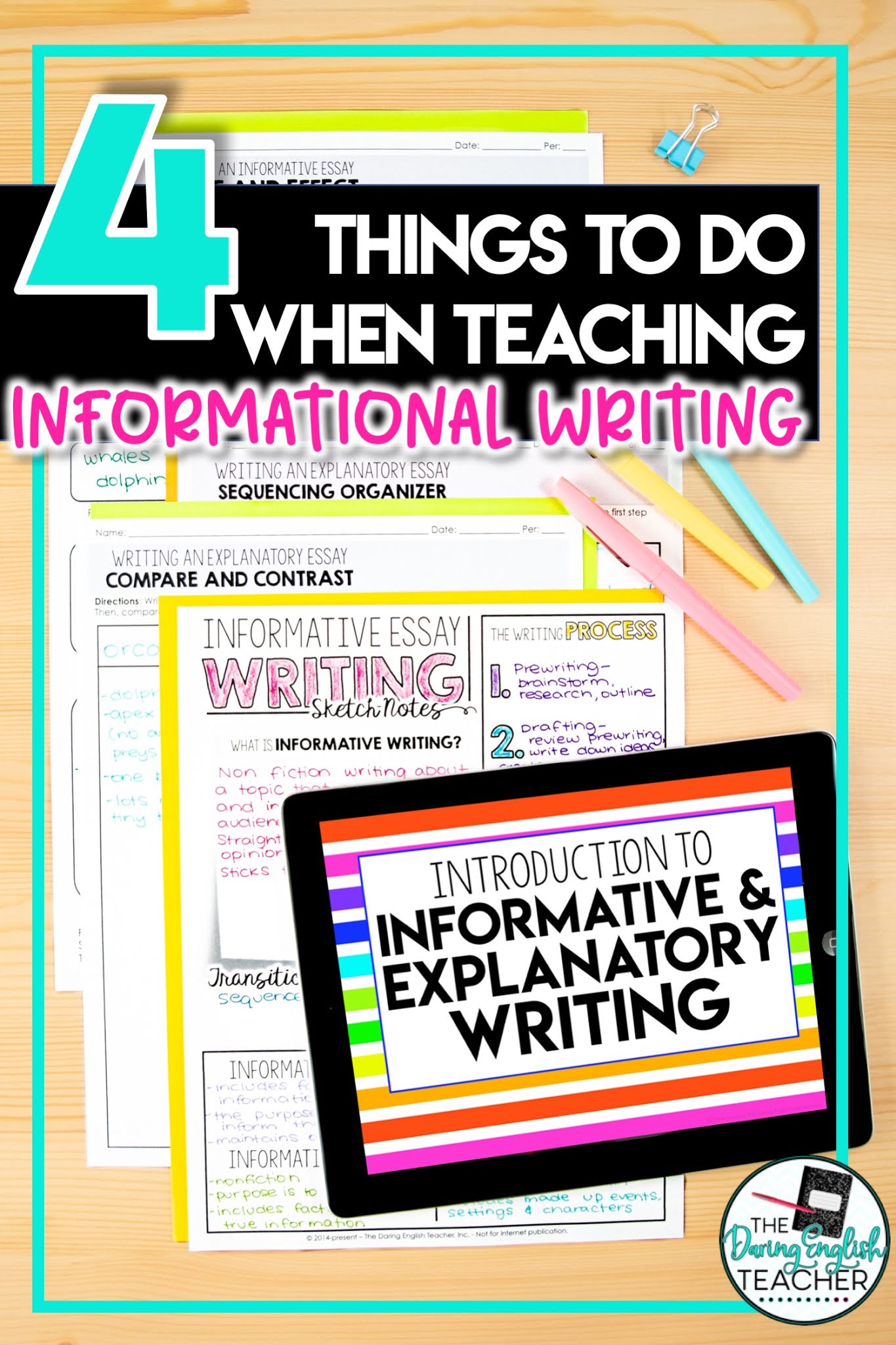One of my biggest units of the school year is my informational writing unit. This can be a tricky unit for students because students want to write with first or second person pronouns and include their own opinions. Teaching informational writing takes time and practice to help students succeed at it, especially if students have informational writing topics they are passionate about.
It can be overwhelming to make sure you’re teaching each and every aspect of informative writing, including how to use and embed quotes and why and how to use the present tense. However, with some time and a plan, teaching informational writing can be a breeze. This blog post will provide you with what you need for how to teach informational writing.
Here are four things to do when teaching informational writing
How to Teach Informational Writing: Break It Down

This is why breaking it down into manageable and teachable steps is imperative. If you’re overwhelmed with teaching all of it, your students will be overwhelmed with learning all of it.
Teaching informational writing is a multi-dimensional skill with many steps and opportunities for teaching, reteaching, and assessing. Here, I’d like to offer several things to focus on when teaching informational writing.
It’s important to note and to tell yourself (multiple times, if necessary), that you cannot address and teach every aspect of informational writing in one unit.
How to Teach Informational Writing: Start Small
You want students to be able to not only understand how to write well but master it. The best way to do that, as you already know, is to start small and build on skills already mastered. Before I even begin an entire informative writing unit, I might make informational writing anchor charts with my students that include sequencing words and transition words they can use in their essays.
I also like to start small with shorter writing assignments before moving on to an entire essay. With informative writing, I always make sure that my students understand the difference between fact and opinion before we start. This helps students stay neutral and unbiased when they write their essays.
How to Teach Informational Writing: Focus on the Process
My informational writing teaching unit guides students through the entire writing process, starting first with brainstorming and going all the way through peer editing and final draft writing.
By focusing on writing as a process, students learn to write their thoughts down, and it also helps avoid writer’s block because students know that they can go back and revise their work.
To start with, take some class time for brainstorming. One of my favorite things to do is brainstorm essays together as a class before having students outline their essays. This helps to ensure that all students are ready to outline and have a good idea about what they are writing about.
Once my students brainstorm ideas for their essays, I then have students outline their essays before moving on to the drafting process. Once their first drafts are complete, I then do some sort of peer or self review activity before we move to the final draft.
How to Teach Informational Writing: Peer Review

Learning to read and write like an editor is an exceptionally helpful way to become a stronger writer. For this reason, I also encourage students to lean on each other for revision help. This can be done informally, or even as a station activity.
I love using this peer editing stations activity in my classroom because it provides students with the opportunity to read their peers’ papers and have have their peers read their paper.
In addition to peer editing, I also like to provide students with a self-check list of items. Typically, this checklist includes items that are part of the assignment. For example, I’ll have students make sure their essay is written in the third person, has a set amount of direct quotes, includes a thesis statement, and has proper citation.
Information Writing Teaching Resources
To help my own students become more strategic and strong writers, I decided to create a series of smaller activities and lessons and want to share them with other teachers as well! These products are perfect for 7-10th grades and require little to no prep– the best part!
Creating Strong Writers
Because students learn best when information and skills are chunked, or separated into smaller more manageable steps, this bundle of 4 digital Writing Spotlight mini-units will help students improve their writing one specific aspect at a time.
Teachers receive an editable and animated Google Slides presentation for direct instruction and a Google Doc filled with student resources and activities. The Google Slides presentations are interactive and include student examples to use as mentor texts. The Google Docs include resources for students to practice the skill as well as resources for students to use as a focus on improving their writing. The four mini-units consist of Writing About Quotes, Writing in Third Person, Writing in the Present Tense, and Embedding Quotes in Writing.
Each of these lessons can be purchased separately, but if you like to save money like I do, grab the entire bundle and save a few bucks!
Go for Digital!
If you’re looking for a little bit more flexibility with the resources above, check out the Writing Spotlight Bundle: Teaching Writing in the Secondary ELA Classroom! This bundle consists of both digital and print versions of the resources listed above, plus a bonus 3-Sentence Writing Prompt Graphic Organizer! So whatever your classroom structure looks like, this bundle has it all for you!
Looking for more? Check out these other teaching resources!
Digital Essay Writing Unit
Digital Personal Statement Writing Unit



